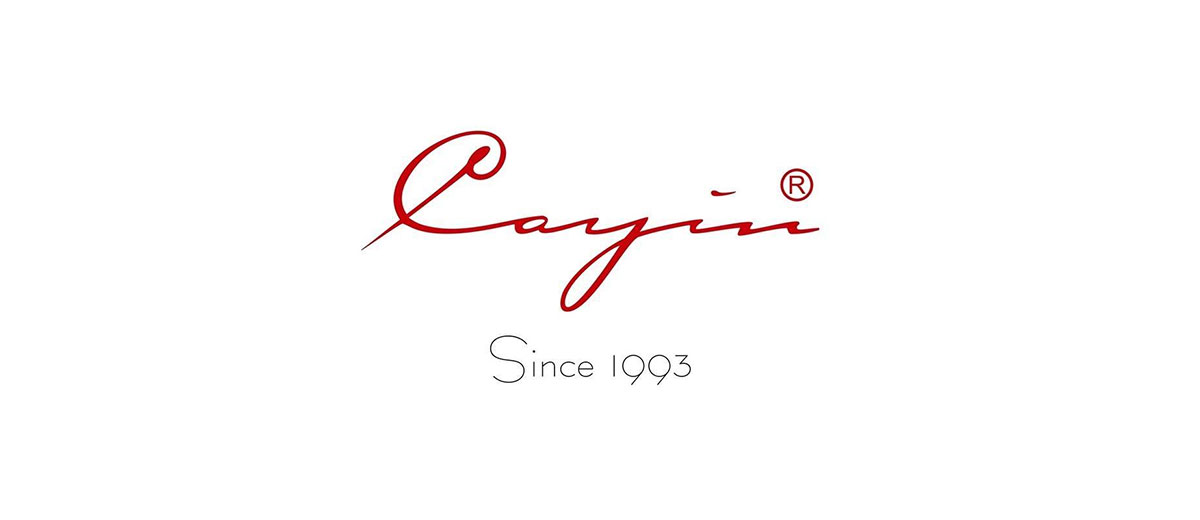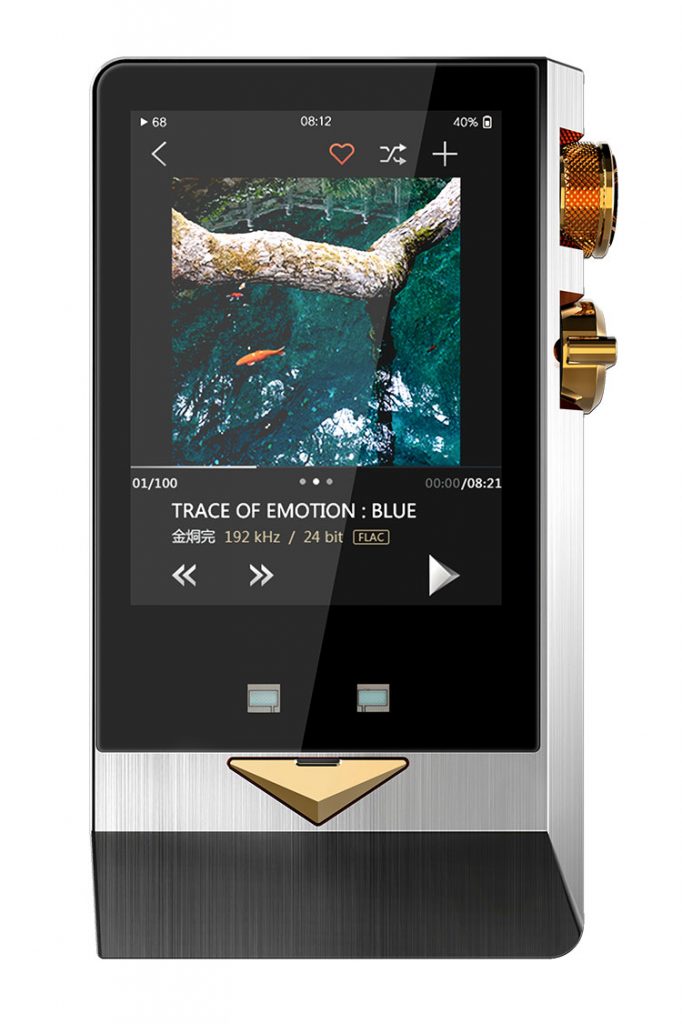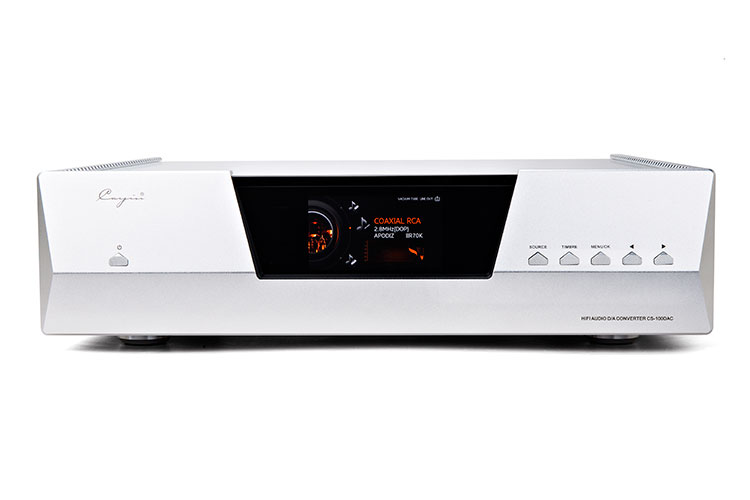I see some companies work a lot with feedback from previous product launches. Is this a good thing or does it bottleneck new ideas that your market has never thought of before?
I’ll describe feedback from previous products as necessary but not sufficient. We definitely should learn from our previous mistakes, but that doesn’t mean we need to stick with the history either.
If you look at the DAP product history of Cayin, we are actually fairly aggressive in establishing new designs after we take our previous mistakes into considerations. When we evolved from the N6 to the N5 and then the i5, they are very different designs and we have also tested out new ideas as early as possible. For instance, we adopted USB micro B in N5, but that didn’t work out very well, so we changed to Type C later on, that was back in June 2016 and i5 is the first DAP with Type C interface. We have also embedded S/PDIF bitstream to the unassigned pin in Type C, that works out pretty well and we keep that idea to other DAPs.
There is one fundamental difference between being creative in product development verse being creative in areas such as Fine Art or advertisement. You can deliver something that is totally different from your previous projects with the latter, but if you are developing a new DAP or amplifier, technical know-how is the critical success factor and you will also be limited by budget and supply chain. Being creative but entering an area that we lack technically incompetence in or appropriate supporting network? That is a very high-risk move and frequently ends up with chaos or even disaster.
Take our N6 DAP as example, that was our first DAP back in 2014, we created a very special design with a circular housing for the screen. It was a very innovative design but the Minimum Order Quantity (MOQ) of circular screen has far exceeded (around 100 times) our sales projection, so we resolved to move to standard rectangular LCD screens. The design become a joke and we were teased by users and reviewers for as long as N6 was in production.
The perception in the market is that audio products are getting more and more expensive but the value proposition is dwindling. Would you agree with that or is the product itself becoming more expensive to make and market?
There are a lot of explanations, but consumers tend to take the most controversial one as the considered nature.
First of all, we have to understand that pursuit of high-end audio, or whatever “high end” hobby such as automobile or designer handbags, is not a linear cost performance progression but an exponential function. Now let’s rate the audio hobby in 10 levels, with 1 being entry level and 10 being ultimate high-end. Upgrade from level 1 to level 2 will be pretty straightforward and cost-effective. From 2-3 will be harder but manageable to the average household. However, if we are in level 8 and want to move up to level 9, that one step is probably 10+ times more difficult then moving from level 1 to level 2, and to go from level 9 to level 10, that will probably cost a big cut out of a senior executive paycheck.
Now let’s explore this subject with some real-life numbers. If we go all the way back to 2005 when Sennheiser announced HD650 at US$549, the headphone was widely accepted as the benchmark headphone at that time. 13 years later at 2018, Focal Utopia, Abyss Ab1266, and HiFiman Susvara, from $3999 to $5999, are the summit of current headphones market. Are they over-priced when compare to HD650 back in 2005? Yes, if you are counting inflation factor only. However, if we put these summit headphones at somewhere between level 8 to 9, then the HD650 probably is somewhere between level 5-6 relatively. If we take 13 years of inflation plus moving up 3 levels towards the top of the high-end audio ladder, I think 10 times price difference is not completely unjustified.
On the other hand, the concept of flagship product is somehow distorted too. Nowadays people assumed the most expensive product in your current lineup is your flagship product and I get a lot of inquiries asking whether N5ii is our flagship DAP. When I told them that N5ii is our entry model in smart DAP product line, they couldn’t comprehend. This misunderstanding on flagship concept leads to a controversial conclusion: your flagship product is so unaffordable and you are a greedy rip-off company.
In the good old days, when a brand releases a flagship product, that is an attempt to showcase their capability, craftsmanship, and vision. So quite often a brand might not have a flagship on some domain because they are not ready to make their “statement” on that area. When they develop a flagship, it is frequently a cost-no-objective exercise and the final price tag was added at the end to reflect the building and R&D cost, so affordability is not one of the considerations when we develop a flagship product. When we repackage and streamline the skill and technologies developed by the flagship to the premium standard products, affordability consideration will kick in.
Having said that, I am confused when a company replaces their flagship product every year. This is beyond my understanding of flagship concept.
When Cayin releases our flagship headphone amplifier HA-300, we do receive judgmental comment similar to those I stated previously. Fortunately, by the time consumers get to see and listen to the HA-300, they do agree that while $3999 is a lot of money for a headphone amplifier, but for what we offered, they think this is value for money and becomes “not-so-unaffordable”.
Cayin has also announced the N8 flagship DAP at Munich High End in 2018. While we haven’t finalized the retail price of this DAP yet, the consumer will perceive this is a “very expensive DAP” when they find out the quality, function, and innovations of this DAP. It’ll be interesting to see whether these “high priced” products will be well received as “high value” items when consumers get to know and tried them in person.
What was the product that made your name as a brand in recent history and why?
Definitely our first DAP N6. This is the DAP that we absolutely put audio performance and sound signature at the top priority. We compromised on weight and portability and even user experience to create the sound we want to achieve. I believe we are the first and only one using dual PCM1792 DAC chipset and BTL amplifier circuit in DAP at that time.
When most manufacturers are using ESS and AK chipset to maximize their digital capability, Cayin decided to stick with PCM1792 as that is closest to our house sound. For the record, Cayin CDT-17A MK2, our premium grade CD player also used dual PCM1792 DAC chipset, so the N6 has indeed inherited the sound signature and design priority of our traditional HiFi products.
While N6 was our ice-breaking product to enter the Personal Audio market, the feedback was mixed initially. Most of the negative comments are related to unconventional UI, funny look and feel, bulkiness and short battery duration On the other hand, while our other products come and go, N6 is still beloved by a niche group of customers who appreciate its uncompromised audio performance at its price range.
When we were at CanJam Singapore last month, we have about a dozen of users came to our booth showed us their N6, telling us N6 is irreplaceable to them and asking for the updated news on the N6 successor. When I whisper a date to them, they all put up a big smile with thumbs up. We are surprised given N6 is a dated (3.5 years) and historical (ceased production for 1.5 years) DAP.
This has reinforced Cayin’s persistent to put audio performance as a top priority in the future. This might imply Cayin will focus on a niche market instead of moving towards the mainstream for a bigger crowd. This might not be a sound business decision, but this is Cayin, and we have positioned ourselves in this direction since 1993.
For 2018, what is the key product from your brand that will be focusing on?
2018 is indeed a very important milestone for Cayin. We’ll celebrate our 25th Anniversary on August this year, and we want to show the world what Cayin is truly capable of and make this the turning point of Cayin. We have scheduled three flagship products in this year. The first one is the HA-300 and we have the debut that at CanJam New York City (February 2018) and we’ll announce the CS-100DAC and just yesterday the N8 at Munich High End (May 2018).
We want to make a statement on our three key product categories at our Silver Jubilee Anniversary, namely a tube amplifier, digital audio processing and a portable DAP. Among these, the N8 stands out as one of the most important flagship products in our history. It is kind of unusual to announce three flagship products within such a short period of time, that’s because our key message is not about a particular product but the dawn of a new era to Cayin.
For the audio market in 2018, what do you see as the next big thing or the rising trend? What are customers looking for in their audio products?
2018 will be a year of V-shape development in personal audio. Take DAPs as an example. On the upper end, we have Lotoo Paw Gold Touch, HiFiman R2R2000, our forthcoming flagship DAP and an unnamed R2R flagship DAP from L&P. On another end we have HiBy R3, Shanglin M0, Iriver ACTIVO CT10 and Xuelin iHiFi790 lined up with a lot of anticipation. This is a good sign as the market is not only focused on breakthrough products at an escalated price, the entry-level products are getting better and cheaper at the same time.
In terms of emerging technologies for personal audio, I think Bluetooth is going to pick up a lot of momentum. If you attend any consumer electronics show today, you’ll be amazed by the variety of Bluetooth headphones and speakers all over the place. Consumers love the convenience of wireless and with the quality of Bluetooth audio is improving, it’s evitable that Bluetooth is a rising star in the personal audio market.
Currently, aptX HD and LDAC are the two popular choices because they offer Hi-Res support. They are fairly aggressive in expanding their market share in the mobile/3C market, but when Personal Audio manufacturers try to get onboard, it is not as straightforward as one would expect.
The aptX camp has a hardware limitation because the technologies are only available through Qualcomm solution, while its easy enough for mobile phone industry to acquire the chipset they need, portable audio manufacturers don’t have the volume to bargain with the semiconductor giant directly, we need to wait for the solution to become available at a lower MOQ. The LDAC is more flexible on hardware platform but getting certified by Sony is not as straightforward either. I am fairly optimistic that once we overcome these non-pragmatic problems, these technologies will be available to portable audio manufacturers and the wireless audio norm will storm the market in no time.
The situation is getting even better when Huawei announced their new Bluetooth codec last month. At up to 900 kbps bitrate, the LHDC promise Hi-Res support up to 24Bit/96kHz, and they are fairly open-minded in accepting new members into their alliance. This will certainly speed up the popularity of high-quality Bluetooth audio applications and we should be able to see new DAP or portable DAC/amp with LHDC as one of the high-quality wireless audio options in next few months. So please stay tuned for another outbreak of Bluetooth portable audio in near future.
Final Thoughts
Ok, so I am a wireless skeptic of sorts but Andy’s discussion about Bluetooth codecs, in particular, the Huawei LHDC code has me in a much more positive mood about the possibility of wireless audio catching up with wired. Will it beat wired? I would say half a ton of cable makers will say no and quite a few non-cable companies such as Sony might say yes.
The key for me is getting both the hardware and software guys connected to the equipment manufacturers in such a way as to penetrate the market and connect with audiophiles. It is ok saying the codec can do this and that but until we have enough companies adopting it both as a receiver and transmitter device then it remains niche. I really hope that is not the case though.
If you want to find out more about Cayin, the products they sell or just generally keep up to date with things you can find their website here and their Facebook page here.
If you want to read our specific Cayin reviews you can find direct links to them below. Thank you again to Andy and the team at Cayin for working with us on this feature and kindly allowing us to reprint some of their pictures as part of this interview.









